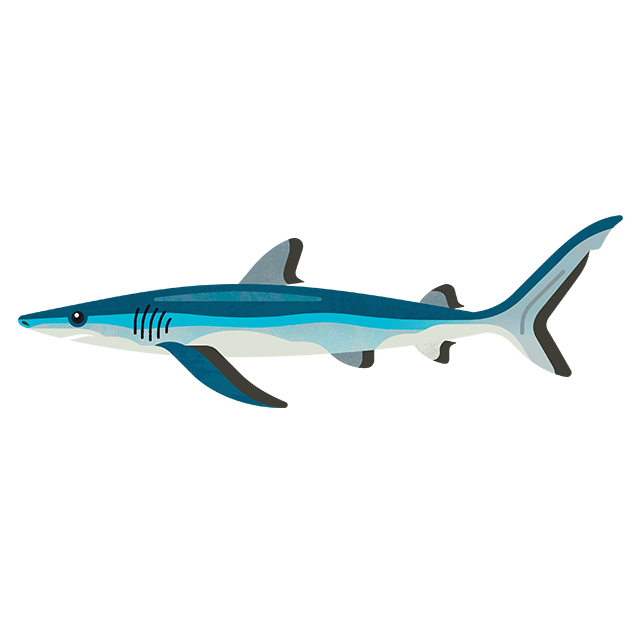
Positive ocean news: December '24 edition
We're finishing this year off on a positive note with our latest round-up of good news stories for our seas. Dive in for some ocean optimism this festive season.
Health of coral reef improves for first time in five years

Credit: Veronica Reverse
Despite the worst coral bleaching event ever recorded taking place in 2024, a new report has found that the health of the Mesoamerican Reef has improved for the first time in five years.
Stretching along 620 miles in the Caribbean Sea, the Mesoamerican Reef is the longest coral barrier reef in the Western Hemisphere. Home to more than 60 types of coral and over 500 species of fish, the reef is a biodiversity hotspot.
Although the bleaching led to high mortality in some areas of the reef, the Mesoamerican Reef Report Card, which assesses the health of coral reefs in the region, found the health of some reef sites improved for the first time in five years.
This is believed to be due to greater enforcement and regulation of fishing by local authorities. Species such as the parrotfish were able to increase their biomass, which reduced the cover of marine algae that can suffocate corals and prevent them receiving essential nutrients.
Read more on the Mongabay website
Large colony of grey seals thriving on England’s coast

Credit: Graeme Cresswell
A grey seal colony in Suffolk is welcoming more seals each year, with the population doubling in just three years.
In 2021, around 200 seals lived at the Orford Ness site, which is Suffolk’s first breeding grey seal colony. Now, there are around 400 seals, and 80 pups have already been born this breeding season – which only began in November.
Matt Wilson, the site manager, believes the success of the colony is due to lack of human disturbance, with visitors forbidden from going near the seals. He believes this is a good indicator of the health of the local marine environment, as the seals would not be there without a good food source.
Read more on the BBC website
Massive marine forests discovered in Chile
Scientists have discovered marine animal forests formed by red hydrocoral in Chile’s Kawésqar National Reserve.
Errina antarctica are colonial marine animals that look like reef-building corals. Although they’re different, both corals and hydrocorals have a three-dimensional structure that a range of marine species call home.
The colonies discovered in the marine reserve are the most shallow and southern ever recorded. Although they’re generally a deep-sea species, the hydrocorals were found between 1.23 to 33 metres deep.
Following the discovery, more research will be carried out to inform conservation, protection and sustainable management proposals.
Read more on the Mongabay website
Mako shark tagged in the Mediterranean Sea for the first time

Credit: Elaine Brewer
Scientists have tagged a shortfin mako shark while on an expedition in the Mediterranean Sea, something which has never been done before.
The shortfin mako shark is one of the ocean’s fastest predators, coupled with the fact it’s so rarely spotted, meant that tagging the creature was no small feat. The electronic tag will help researchers understand the shark’s movements and whereabouts, which can be used to inform conservation efforts.
Data already recorded from the tag shows that the shark, despite only being one or two years old, has already travelled more than 750 miles. Information like this could play a significant role in developing plans to protect the species by highlighting the great distances they travel and to which areas of the ocean.
Read more on the Oceanographic website
New initiative aims to reconnect people to marine life

Credit: Adam Juman via unsplash
Local communities and ocean lovers will have the chance to discover the underwater world of skate and rays in Plymouth Sound National Marine Park through the new ‘Little Rays of Hope’ initiative.
The initiative aims to reconnect people with the ocean and marine life by improving understanding and awareness of local biodiversity. As well as digitally documenting the lives of the local skates and rays, the initiative will offer communities the chance to get involved in conservation efforts and help make a positive difference.
People will be encouraged to take part in the Shark Trust’s Great Egg Case Hunt, in which they identify and report skate and ray egg cases they find on local beaches. Citizen science activities like these contribute important data which is used to inform research and marine conservation efforts.
Read more on the Oceanographic website
Water voles return to local waterways for first time in 20 years

Credit: Jonathan Ridley/unsplash
After the population faced a severe decline due to the introduction of non-native American mink, water voles have once again returned to the Severn Shoreline Levels and Moors, of North Somerset and South Gloucestershire.
The West of England Nature Partnership (WENP) and Bristol Zoological Society worked together to reintroduce the mammals, which are said to be important ecosystem engineers. Conservationists have also been reviving intertidal habitats, wetlands and peatlands to support the voles.
Water voles maintain riverbanks and their burrows are used by other species, such as bumblebees, which use them as nesting sites. They also play a role in the food chain.
Read more on the BBC News website
Damselfish found to be excellent fish parents

Credit: Francesco_Ricciardi/Shutterstock
Scientists have found that a species of damselfish’s approach to parenting improves the chances of their offspring’s survival by three times.
Rather than leaving the reef when they become larvae, spiny chromis damselfish in the western Pacific Ocean never leave it, with both parents continuing to care for them. Crucially, the damselfish parents eat gnathiids, parasites which are found on the reef and feed on the blood of their host, much like mosquitoes.
Gnathiids are particularly harmful to juveniles, causing a reduction in fishes’ swimming, escape response, aerobic performance and overall survival. A new study by the University of Queensland has found that by eating the parasites off their offspring, the spiny chromis damselfish improve the chances of their offspring’s survival by three times.
Dr Alexandra Gutter from the University of Queensland said, “This is a fascinating example of great fish parenting."
Read more on the ScienceDaily website



